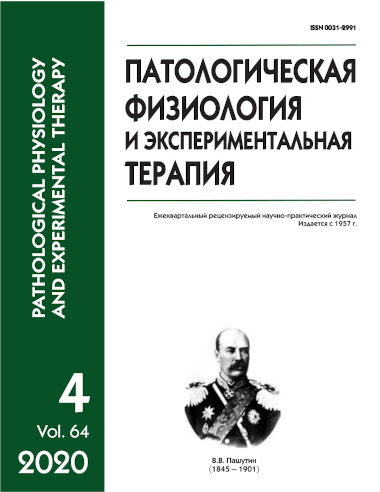Research of biocompatibility of intracorneal lenses in an experimental study ex vivo
Abstract
Currently, several types of intracorneal lenses (ICL) are used in clinical practice to correct presbyopia [5]. It seems relevant to search for biocompatible material that is inert with respect to corneal stromal tissue, in the presence of which corneal stromal cells have a reduced tendency to adhesion and proliferation [7‒10]. In this study, 2 different polymers based on hydroxyethylmethacrylate (HEMA) and olygouretanmethacrylate (OUMA) were selected. [11‒14].
The aim is to study the reaction of the cadaver corneas to the implantation of ICL made of polymer materials based on HEMA and OUMA in an experimental study ex vivo.
Methodology. To model the process of intracorneal implantation, we used the eyeballs of cadaver donors (EBCD). Four experimental groups were formed: 1. The experimental group of "HEMA" (3 EBCD). 2. An experimental group of "OUMA" (3 EBCD). 3. The comparison group of "Chronic control" (4 EBCD). 4. The comparison group of "Acute control" (3 EBCD). At the end of the study, the presence of fibrous connective tissue elements on the studied surfaces and the degree of ICL deformation were evaluated. Qualitatively compared the images in the experimental and control groups, as well as obtained by various methods – fluorescence microscopy and scanning electron microscopy.
Results. According to the results of the ex vivo study, the developed lenses did not tend to encapsulate. On the surface of the ICL in the experimental groups cellular-fibrous elements were found, however, there was no monolayer of cells or fibrous elements on thee ICL in experimental groups, and therefore it can be assumed that the studied polymer materials have minimal adhesive properties.
Conclusions. Thus, the results of the experimental study ex vivo show that ICLs made of both polymer materials (HEMA and OUMA) are potentially suitable for intracorneal implantation and can be recommended for further study in clinical conditions, because of its biologically compatible.
Downloads
References
2. Rozanova O. I. et al. Patterns of structural and functional changes in the eye with the development of presbyopia. Vestnik oftal'mologii. 2011; (3): 17-20. (in Russian)
3. Seliverstova N.N. Pathogenetic substantiation of the principles of treatment of presbyopia in patients with myopic refraction: diss. Irkutsk; 2014. 132 p. (in Russian)
4. Arlt E., Krall E., Moussa S., Grabner G., Dexl A. Implantable inlay devices for presbyopia: the evidence to date – Clinical ophthalmology - 2015 Jan 14;9:129- 37
5. Atchison D.A. Accommodation and presbyopia. Ophthalmic and Physiological Optic 1995;15(4):255-72
6. Baily C., Kohnen., O'Keefe M. Preloaded refractive-addition corneal inlay to compensate for presbyopia implanted using a femtosecond laser: one-year visual outcomes and safety – 4 Journal of Cataract and Refractive Surgery Vol. 40 (8) - 2014, P. 1341–1348 (Icolens inlay)
7. Khench L., Dzhons D. Biomaterials, artificial organs and tissue engineering. Tekhnosfera. 2007 (in Russian)
8. Charman W.N. Developments in the correction of presbyopia I: spectacle and contact lenses Ophthalmic and Physiological Optic 2014; 34: 8–29
9. Charman W.N. Developments in the correction of presbyopia II: surgical approaches Ophthalmic and Physiological Optic 2014; 34: 1-30
10. Chayet A, Barragan Garza E. Combined hydrogel inlay and laser in situ keratomileusis to compensate for presbyopia in hyperopic patients: one-year safety and efficacy. J Cataract Refract Surg. 2013; 39(11):1713–1721
11. Stojanovic N.R., Panagopoulou S.I., Pallikaris I. G. Cataract Surgery with a Refractive Corneal Inlay in Place - - Case Reports in Ophthalmological Medicine - Volume 2015 (2015), Article ID 230801, 4 pages - 2 June 2015
12. Moroz Z.I., Leont'eva G.D., Novikov S.V., Gurbanov R.S. Refractive results of implantation of intrastromal corneal segments based on hydrogel in patients with keratoconus. Oftal'mokhirurgiya. 2009; (1): 14-17 (in Russian)
13. Morozova T.A. Intraocular correction of aphakia with a multifocal lens with gradient optics. Clinical and theoretical research: diss. 2006 (in Russian)
14. Gil-Cazorla R., Shah S., Naroo S.A. A review of the surgical options for the correction of presbyopia Br J. Ophthalmology 2016;100: 62–70
15. Borzenok S.A. Medical, technological and methodological foundations of the effective activity of the eye tissue banks of Russia in providing operations for through corneal transplantation: diss. Moscow; 2008. 306 p. (in Russian)
16. Freshni R.Ya. Culture of animal cells. Binom. 2010. 691 p. (in Russian)
17. Malyugin B.E., Borzenok S.A., Mushkova I.A., Ostrovskiy D.S., Popov I.A., Shkandina Yu.V. Investigation on the intracorneal lens material biocompatibility using the model of the corneal stromal cell culture. Vestnik transplantologii i iskusstvennykh organov. 2017; 19 (1): 74-81






